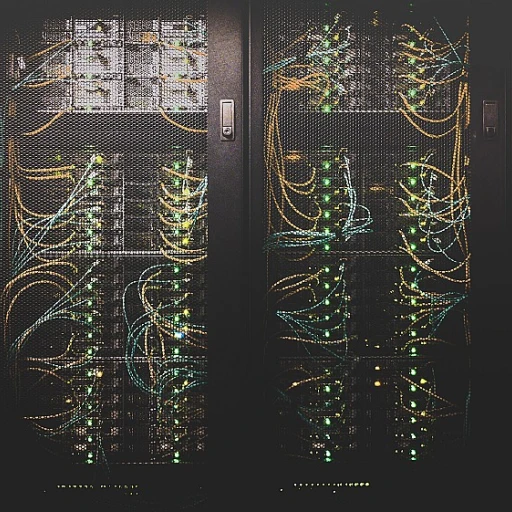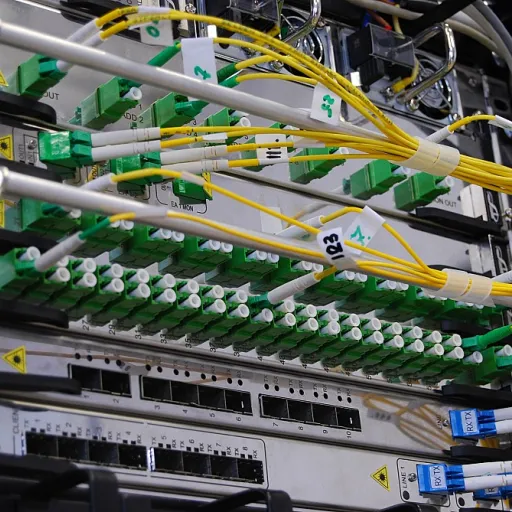
Understanding Energetic Forces in Business
Unleashing the Potential of Energetic Forces
In today's fast-paced business environment, understanding the energetic forces within an organization is crucial for maintaining high performance and avoiding burnout. The concept of energy management is not just about physical stamina; it encompasses emotional and psychological energy as well. Leaders need to focus on harnessing these energies to create a positive work environment that fosters innovation and productivity.
Energy management involves strategic time management and the efficient allocation of resources. By spending time wisely and focusing on high-energy tasks, organizations can boost team performance and enhance overall productivity. This requires a deep understanding of organizational behavior and the influence of leadership on team dynamics.
According to a recent review, businesses that prioritize energy management are better equipped to adapt to changes and sustain growth. High-energy teams are more resilient and capable of overcoming challenges, making energy management a critical component of modern business strategy.
Meetings, often seen as energy drains, can be transformed into powerful tools for team development when managed effectively. By aligning meetings with organizational goals and ensuring they are purposeful, leaders can maintain high energy levels and keep teams motivated.
As we explore the future of software, it is essential to recognize the role of energy in driving innovation and success. By leveraging energetic forces, businesses can unlock new opportunities and stay ahead in a competitive landscape.
The Role of AI and Machine Learning
AI and Machine Learning: Transforming Business Dynamics
Artificial Intelligence (AI) and Machine Learning (ML) are revolutionizing the way organizations harness their energetic forces. These technologies are not just tools but catalysts that influence behavior, enhance team performance, and optimize time management. By integrating AI and ML, businesses can focus on high-energy tasks, allowing leaders to spend time on strategic initiatives rather than mundane operations.
AI's ability to process vast amounts of data quickly and accurately is reshaping organizational behavior. It empowers leaders to make informed decisions, enhancing personal energy and emotional energy within teams. This transformation is evident in how AI-driven analytics provide insights into team dynamics, helping to identify burnout risks and improve overall energy management.
Moreover, AI and ML are pivotal in enhancing management review processes. By automating routine tasks, they free up time for leaders to engage in more meaningful interactions, fostering a positive energy environment. This shift not only boosts team performance but also aligns with the principles of energy organizations, where the focus is on maximizing the power energy of every individual.
Incorporating AI and ML into business strategies also aligns with the insights from the guide to concept development and planning. By leveraging these technologies, organizations can create innovative solutions that drive growth and sustainability, ensuring they remain competitive in an ever-evolving market.
Ultimately, the role of AI and ML in business is not just about efficiency but about creating an environment where energy is positive, and every day is an opportunity for growth and innovation. As these technologies continue to evolve, their influence on organizational behavior and leadership will only grow, making them indispensable in the future of software.
Cloud Computing and Its Impact
Revolutionizing Workflows with Cloud Solutions
In today's fast-paced business environment, cloud computing stands as a pivotal force in reshaping how organizations operate. The shift to cloud-based solutions is not merely a technological upgrade; it is a strategic move that influences organizational behavior and enhances team performance. By leveraging the cloud, businesses can harness high energy and focus on core competencies, allowing leaders to drive innovation and efficiency.
Cloud computing offers unparalleled flexibility and scalability, enabling organizations to adapt swiftly to changing market demands. This adaptability is crucial for maintaining high energy levels within teams, as it reduces the time spent on managing infrastructure and allows for more focus on strategic initiatives. The cloud's ability to streamline operations and improve time management is a game-changer for businesses aiming to optimize their resources and energy management.
Moreover, cloud solutions facilitate better collaboration and communication, essential elements for effective team performance. By providing a centralized platform for meetings and project management, the cloud empowers teams to work more cohesively, reducing the risk of burnout and enhancing overall organizational energy. This positive energy creates a ripple effect, influencing behavior and boosting performance across the board.
As organizations continue to explore the potential of cloud computing, they must also address the cybersecurity challenges that come with it. Ensuring data security and privacy is paramount, and businesses must invest in robust solutions to protect their assets. By doing so, they can maintain the trust of their stakeholders and continue to harness the power of cloud computing effectively.
For more insights into how cloud computing is transforming industries, you can explore innovations in the food traceability industry, where cloud solutions are making significant impacts.
Cybersecurity Challenges and Solutions
Addressing Cybersecurity in a Dynamic Business Environment
In today's fast-paced business world, where energy and performance are critical, cybersecurity remains a top priority. As organizations increasingly rely on digital platforms, the risk of cyber threats grows, impacting both organizational behavior and team performance. Leaders must focus on implementing robust security measures to protect sensitive data and maintain trust.
Cybersecurity challenges are multifaceted, involving not just technical solutions but also human factors. The psychology of employees plays a significant role in how effectively security protocols are followed. Regular meetings and training sessions can help reinforce the importance of security practices, reducing the likelihood of breaches caused by human error.
Strategies for Enhancing Cybersecurity
- Energy Management: Allocating time and resources to cybersecurity initiatives is crucial. Organizations should regularly review their security strategies to ensure they are up-to-date and effective.
- Leadership and Influence: Strong leadership is essential in fostering a culture of security. Leaders must influence behavior by setting an example and prioritizing cybersecurity in their management practices.
- Team Development: Investing in the development of cybersecurity skills within teams can enhance overall team performance. Encouraging employees to stay informed about the latest threats and solutions can create a more resilient organization.
- Emotional Energy: Addressing burnout and maintaining high energy levels among cybersecurity teams is vital. Ensuring that teams are not overworked can lead to more effective threat detection and response.
As businesses continue to evolve, the integration of AI and machine learning, as discussed earlier, offers new opportunities for enhancing cybersecurity. These technologies can automate threat detection and response, allowing organizations to focus their energy on strategic initiatives rather than reactive measures.
The Rise of Low-Code and No-Code Platforms
The Evolution of Software Development Platforms
In the ever-evolving landscape of software development, the rise of low-code and no-code platforms is reshaping how organizations harness their dynamic energies. These platforms are democratizing software creation, allowing people with varying levels of technical expertise to contribute to development projects. This shift is not just about technology; it's about empowering teams and enhancing organizational performance.
Low-code and no-code platforms are designed to streamline the development process, enabling faster turnaround times and reducing the burden on traditional IT departments. This efficiency is crucial in today's fast-paced business environment, where time management and energy management are key to maintaining high energy and avoiding burnout. By spending time on strategic initiatives rather than getting bogged down in complex coding tasks, teams can focus their energies on innovation and creativity.
Empowering Teams and Enhancing Performance
The influence of these platforms extends beyond just technical capabilities. They foster a culture of collaboration and inclusivity, where team members from different departments can contribute their insights and expertise. This collaborative approach not only enhances team performance but also aligns with the principles of organizational behavior and energy management. By creating an environment where personal energy and emotional energy are valued, organizations can cultivate a positive energy that drives success.
Moreover, the leadership and management styles within organizations are adapting to this new paradigm. Leaders are recognizing the importance of energy management and are focusing on creating a work environment that supports the well-being and productivity of their teams. This shift in focus is supported by research from sources like the Harvard Business Review and the Academy of Management Journal, which highlight the benefits of energy-positive workplaces.
Challenges and Opportunities
While the benefits of low-code and no-code platforms are clear, they also present challenges that organizations must navigate. Ensuring that these platforms are integrated seamlessly into existing workflows requires careful planning and management. Additionally, there is a need for ongoing training and development to ensure that all team members can effectively utilize these tools.
Despite these challenges, the opportunities presented by low-code and no-code platforms are immense. By reducing the technical barriers to software development, organizations can unlock new levels of creativity and innovation. This, in turn, can lead to improved organizational performance and a more agile response to market demands.
Sustainability in Software Development
Embracing Sustainable Practices in Software Development
As organizations strive to harness dynamic business energies, sustainability in software development has emerged as a crucial focus. The integration of sustainable practices not only enhances team performance but also aligns with the broader goals of energy management and organizational behavior.
Incorporating sustainability involves a multifaceted approach that touches on various aspects of development and management. Here are some key considerations:
- Energy Efficiency: Developing software that optimizes energy consumption is essential. This involves creating applications that require less computational power, thereby reducing the environmental impact and operational costs.
- Resource Management: Efficient use of resources, such as server space and bandwidth, is vital. Organizations can focus on minimizing waste and maximizing the utility of available resources, which contributes to a more sustainable operational model.
- Remote Work and Collaboration: Encouraging remote work can significantly reduce the carbon footprint associated with commuting and office energy consumption. This shift also influences team dynamics and requires effective time management and leadership to maintain high energy and performance levels.
- Long-Term Vision: Sustainable software development requires a long-term perspective, where leaders prioritize the development of systems that are adaptable and resilient to future changes. This vision aligns with the principles of emotional energy and personal energy management, ensuring that teams remain motivated and focused.
By integrating these sustainable practices, organizations can create a positive energy environment that not only benefits the planet but also enhances the overall performance and well-being of their teams. As leaders in the field, it is crucial to influence behavior and foster an organizational culture that values sustainability as a core component of software development.





-large-teaser.webp)









